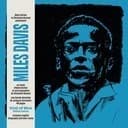Interval Formula and Structure
G♯ Dorian follows the interval formula W-H-W-W-W-H-W, producing the notes G♯-A♯-B-C♯-D♯-E♯-F♯-G♯. The defining characteristic is the major sixth degree (E♯), which distinguishes it from G♯ Aeolian (Natural Minor) that contains E natural. This single note alteration creates the signature Dorian brightness—a minor scale that sounds simultaneously melancholic and hopeful. The scale contains the intervals: root, major 2nd, minor 3rd, perfect 4th, perfect 5th, major 6th, and minor 7th. With six sharps in its key signature (including the relatively uncommon E♯), G♯ Dorian presents notational challenges but rewards players with a distinctively radiant tonal quality. The raised sixth creates what jazz educators call the "Dorian sixth"—the intervallic feature that makes this mode sound brighter and more sophisticated than natural minor.
Relationship to F♯ Major and Enharmonic Equivalence
As the second mode of F♯ Major, G♯ Dorian shares the exact same six-sharp key signature (F♯, G♯, A♯, C♯, D♯, E♯) but emphasizes G♯ as the tonal center. This parent-scale relationship allows musicians to conceptualize G♯ Dorian as "F♯ Major starting from G♯," simplifying modal understanding despite the complex key signature. Importantly, G♯ Dorian is enharmonically equivalent to A♭ Dorian—both scales sound identical but use different notation (sharps versus flats). Many musicians prefer the flat spelling for its easier readability, particularly horn players who favor flat keys. Compared to darker modes like G♯ Phrygian or the more exotic G♯ Harmonic Minor, G♯ Dorian occupies a balanced, versatile middle ground. Understanding its relationship to more commonly used Dorian scales like D Dorian and E Dorian helps transfer modal concepts across different keys.
Practical Applications Across Musical Genres
G♯ Dorian appears in jazz compositions and improvisations where sharp-based key relationships are established, working effectively over G♯m7 chords where the raised sixth (E♯) enables sophisticated melodic choices and voice leading. Contemporary R&B, neo-soul, and progressive rock musicians utilize G♯ Dorian for its sophisticated minor quality, particularly when composing in sharp keys or modulating from related major keys. The characteristic i-IV progression (G♯m-C♯) provides the quintessional Dorian sound—a harmonic foundation for modal vamps and extended improvisations. While less common than simpler Dorian keys due to its six-sharp signature, G♯ Dorian offers unique tonal colors for composers and improvisers working in sharp-based contexts. Many musicians choose to think of this scale as A♭ Dorian for practical reading purposes, demonstrating the flexibility of enharmonic equivalence in real-world musical applications.
Characteristic Sound and Learning Strategies
G♯ Dorian produces the quintessential "bright minor" quality—what jazz musicians describe as sophisticated, cool, and modern. The major sixth interval (G♯ to E♯) creates openness and prevents the heaviness associated with natural minor, while the minor third (G♯ to B) maintains emotional depth and minor tonality. This combination yields a "jazzy minor" sound that works beautifully for modal compositions, funk- influenced progressions, and contemporary harmonic explorations. The absence of a leading tone (major 7th) gives G♯ Dorian a floating, non-resolving quality perfect for extended vamps and meditative passages. When learning G♯ Dorian, begin by comparing it directly with G♯ Natural Minor—play both consecutively, focusing on how the raised sixth (E♯ versus E natural) transforms the tonal character. Practice over a G♯m7 chord progression, emphasizing the sixth degree in your melodic phrases to internalize the Dorian sound. Study iconic Dorian compositions like "So What" (originally in D Dorian) and transpose the modal concepts to G♯. Consider working with the enharmonic equivalent A♭ Dorian if flat keys feel more natural—the sound remains identical while the notation becomes more accessible. Practice the characteristic G♯m-C♯ progression to develop fluency with the mode's harmonic character and build comprehensive modal vocabulary across all keys.





